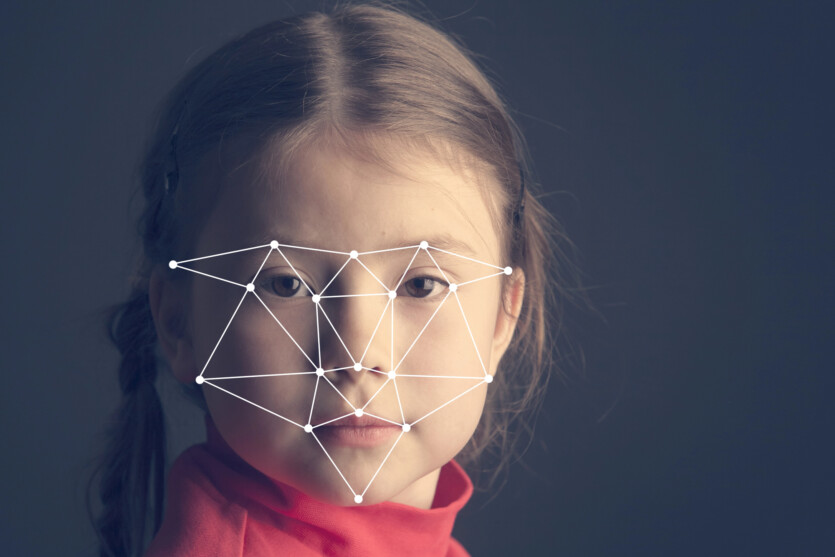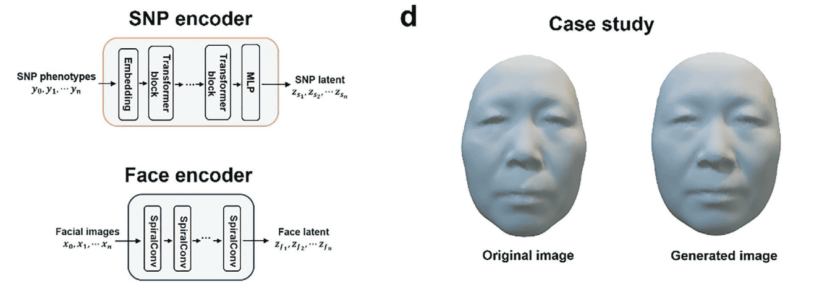
Researchers from the Chinese Academy of Sciences have developed a new AI-based tool is capable of recreating the face of a real person using only a fragment of DNA.
A tool called Difface is able to recreate a three-dimensional image of a real person’s face from a fragment of DNA. The technology was created on the basis of many years of research into the relationship between genetics and facial features, including the shape of the nose and cheekbones, jaws.
«Surprisingly, Difface can generate three-dimensional images of people’s faces based solely on their DNA data, predicting their appearance at different ages», — says a senior researcher in the research team Luonan Chen.
Difface works on the principle of using modern methods image generation and machine learning, creating accurate 3D images of faces based on single nucleotide polymorphisms differences in a single nucleotide DNA sequence in the genome (or in another comparable sequence) of representatives of the same species or between homologous regions of homologous chromosomes. The tool is used to transform images and a spiral convolutional neural network for matching single nucleotide polymorphisms with a three-dimensional cloud of facial points to generate general facial features of a particular person.
differences in a single nucleotide DNA sequence in the genome (or in another comparable sequence) of representatives of the same species or between homologous regions of homologous chromosomes. The tool is used to transform images and a spiral convolutional neural network for matching single nucleotide polymorphisms with a three-dimensional cloud of facial points to generate general facial features of a particular person.

AI was trained on the face database of 9,674 Han Chinese people. Each of them provided the results of genome sequencing and a high-resolution 3D image of your own face. After training, the AI was able to reproduce such subtle facial features as the depression at the tip of the nose or the shape of the cheekbones.
In addition, the model takes into account additional phenotypic data such as age, gender, and body mass index, which allows it to predict changes in the face with age. Difface achieves 3.33% face reconstruction accuracy by the closest match. In earlier models, the Mahdi and Sero, these figures were 2.48% and 3.00%. The average reproduction error was only 3.52 mm in terms of the Euclidean distance between the real and generated images. The Euclidean distance represents how similar two data points are, assuming that some clustering based on other data has already been performed. When the model was provided with additional information — age, gender, and body mass index — the error decreased even further, to 2.93 mm.

This AI model can be used in forensic science, allowing investigators to recreate a criminal’s face using DNA fragments accidentally left at a crime scene. However, some facial features may still be inaccurate if an incomplete set of genetic data is provided. When the model processed variants with less than 70% of the data single-nucleotide polymorphisms, the faces it reproduced mostly lost their individual features.
Currently, the biggest concern is that the use of technology Difface could undermine the confidentiality of data stored by DNA testing companies. It could also lead to abuses in the areas of surveillance, law enforcement, and marketing. In the United States, law enforcement agencies have already used DNA phenotyping to create portraits of suspects. In China, authorities have compiled DNA-based databases of ethnic minorities.
Expanding the model to work accurately across different ethnic groups will require huge new data sets and raise even more ethical questions. However, the developers are preparing for this.
«Validating Difface using datasets from multiple ethnic groups and studying whether additional genetic loci are needed for certain facial features will be key steps», — the developers emphasize.
Xiaomi launches its first AI model MiMo with 7 billion parameters
The results of the study were published in the journal Advanced Science
Source: ZMEScience

Spelling error report
The following text will be sent to our editors: